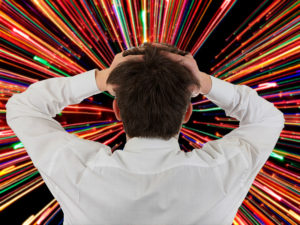Main Body
Effective Treatment
ECT is rapidly effective in acute exacerbations, or brief and severe cases. These cases may include delusions, hallucinations, and

disorganized thoughts/behavior (Keuneman, Weerasundera, & Castle, 2002). It is also thought to be a therapeutic tool in psychiatry and yield a high percentage of excellent results (Kleinerman, 1947). 20% of referrals are to ECT because of having schizophrenia (Canady, 2016). Surveys in teaching hospitals reported that schizophrenia is the most common diagnosis for patients to receive ECT. In India, ECT is also used to successfully treat depression, mania, and catatonia (Phutane, Thirthalli, Kesavan, Kumar, & Ganhadhar, 2011). 20% of patients also don’t respond to medications (Canady, 2016). To increase that percentage further, 20%-33% of patients don’t respond to antipsychotics (Grover, Charkrabarti, Hazari, & Avasthi, 2017).
As stated above, ECT is considered a second-line treatment. But, it can also be a first-line treatment. “Today, reappraisal6 finds ECT to be as effective, if not more so, than the antipsychotic drugs in certain clinical settings” (Keuneman, Weerasundera, & Castle, 2002, p. 387). Depending on the severity of one’s condition, treatment in a hospital may be more helpful than in an office. ECT is used if there are no other effective treatments, usually medications, that work for a patient. A patient has the choice of using medication or going down a different route for treatment. If requested and it’s appropriate, they can receive ECT as their main treatment (Fablet-Vergnaux, Loirat, & Vanelle, 2003).
ECT works best given certain circumstances. If you’re ill less than six months you have a better chance of treatment being successful. The remission7 rate decreases the longer the illness is. There is a very low mortality rate. This will increase along with an increase of curare, a muscle relaxant used with anesthesia. ECT is not to blame for the dangers of curare (Kleinerman, 1947). Curare is a blocking agent used along with anesthesia for procedures. Its intent is to produce paralysis in the muscles to make them numb.
A study conducted in a hospital that covered 455 cases of schizophrenia in male veterans in 1945-1948 used ECT as the form of treatment. 320 out of 455 (70.3%) had immediate post-shock improvement. 80 of the 455 (17.6%) recovered, and 37 of those 80 (46.2%) maintained improvement. 118 out of 455 (25.9%) had moderate improvement, and 43 of the 118 maintained improvement (36.4%). Remission rates could’ve been higher if the number of months ill was lower for the patients. This study concluded that whites recover better than blacks, perhaps due to home life (Palmer, Sprang, & Hans, 1951).
A study from 1946-1947 with 112 female patients compared its results to a study from 1934-1935 with 119 female patients. The results showed a 60% improvement with 67 of the 112 patients versus the prior study only showing an improvement of 22.5%. with of the 27 of the 119 patients. Overall, the more recent study had 84 of the 112 (75%) females improve from the use of ECT. The study discussed the improvements ruling out that factors could be an issue. Despite the factors, there was an improvement seen in each group of patients (Currier, Cullinan, & Rothschild, 1952).
A study in India of 202 patients was conducted to augment pharmacotherapy8, which is the most common indication. 93% of patients showed adequate improvements after the course of the ECT treatments. 93 (46%) of the patients were females, the mean age was 28.6 years old, the mean duration of illness was 54.6 months (5.5 years), and the mean amount of ECT’s given were 8.4. Due to the adequate improvement on the subject group ECT treatment was stopped. In India, ECT is used as a preferred source of treatment, especially for schizophrenia (Phutane, Thirthalli, Kesavan, Kumar, & Ganhadhar, 2011). ECT has been proven very effective among patients in India and is used to help reverse the side effects of antipsychotics if they’re used.
ECT is said to be effective by the 2016 American Psychiatric Association (APA). Tyler Kaster, M.D. of the University of Toronto stated, “We were not surprised that ECT was effective for patients with schizophrenia… It was surprising how effective it was” (Canady, 2016, p. 7). Kleinerman says, “Shock therapy is still empirical, but this should not detract from its worth since it has proved its value by pragmatic tests.” ECT can be helpful in the treating schizophrenia cases with large affective components9 present (Kleinerman, 1947, p. 299). A successful case study produced a conclusion that “electroshock therapy has a definite but limited usefulness in the clinical management of schizophrenia” (Palmer, Sprang, & Hans, 1951, p. 169). ECT is an effective form of treatment for schizophrenia when the right factors are involved. Overall ECT is effective in schizophrenia and may improve response to medication (Zervasm, Theleritis, Soldatos, 2012).
[6] Reappraisal is the assessment of worth, value, or quality of something, ECT in this case.
[7] Remission is a period where there’s a decrease in the occurrence of the disease. Remissions can be temporary or permanent.
[8] Pharmacotherapy is the treatment of disease through the administration of drugs.
[9] Affective components are the feelings or emotions one has towards an attitude object (ECT).
